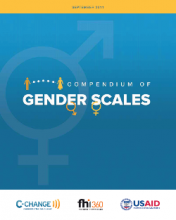Compendium of Gender Scales
The identification of appropriate gender-related measures is important for developing and evaluating interventions that aim to promote positive health outcomes by addressing the gender norms that function as barriers to health. A scale is a numerical score aggregating multiple indicators believed to reflect an underlying concept. Because there is no single “gold standard” for measuring gender norms, gender attitudes, women’s empowerment, and other aspects of gender, researchers often use multiple measures. Using a single measure is not possible because gender operates in multiple spheres and has many facets. When a single measure is preferred, a scale combining several items creates…

